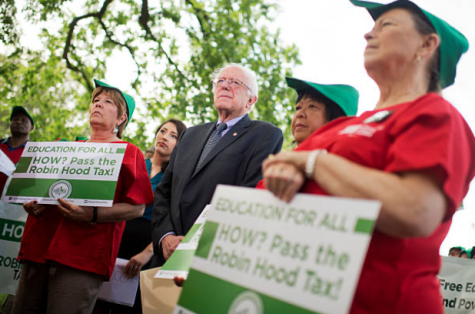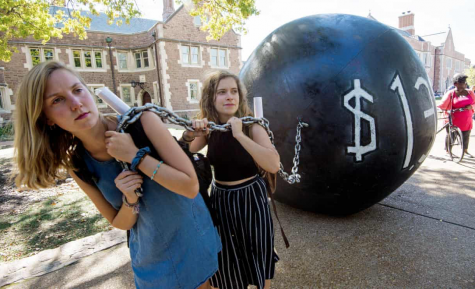
Amy Parr | News Editor
January 24, 2021
Over 42 million Americans are weighed down by student loans. Cumulatively, these millions of people are over $1.6 trillion in debt, just for receiving an education. Student debt is more than double the cumulative American credit debt of $416 billion, and as the cost of tuition increases each year, it is bound to grow even further.
This debt has been plaguing the nation for decades, but with the start of President Biden’s first term, there is hope for the first time in a long time.
COVID-19 has cost millions of jobs and forced thousands of small business to close, cutting off many Americans’ source of income, which is already strained by student debt payments for the aforementioned 42 million Americans. Fortunately, Congress paused the federal collection of student loans last March and set the interest to 0%, which was extended by President Trump to last until January 31, 2021.
With the expiration date approaching, many have wondered how President Biden will choose to tackle this ongoing dilemma. The stimulus package from December originally included an extension to the debt relief, but was ultimately cut from the deal, leaving many Americans uncertain as to what comes next in this debt crisis.
When President Biden took the presidential oath on January 20, he signed 17 executive actions, one of which extended the student loan relief until September 2021. This short term plan is great for Americans, but his long term plans may come as a disappointment to some.
“I heard that Bernie Sanders was going to completely erase all student debt if he became president,” junior Margaret Ortiz said. “Even though Bernie’s plan sounds nice, it doesn’t seem realistic.”

What’s the long-term solution to this financial crisis? Some, like Senator Bernie Sanders, call for a complete eradication of all student debt, while others, like Senator Elizabeth Warren, have proposed forgiving $50,000 for each borrower. Biden’s plan isn’t nearly as drastic, and even though it would be an improvement on the current situation, his current plan significantly differs from his pre-election stance on student loan forgiveness.
Back in October, Biden said that, as President, he would forgive $10,000 per year (up to five years) for all those who owe student loans. He would also forgive all debt from all public colleges and historically Black colleges for those who make $125,000 a year or less. Now that Biden is president, he has only mentioned the first part of his promise, not acknowledging his previous claims of complete cancellation of debt payments for public and Black colleges.

“There’s still plenty of time for Biden to make changes to his plans for student loans,” junior Ava Johnson said. “But I’m a little disappointed that he’s strayed a little from his original plans.”
Many others feel the same way. The Debt Collective, an organization dedicated to eradicating student debt, has launched a campaign demanding that the Biden administration cancel all student debt in the first 100 days of his presidency. They have organized a group of 100 strikers, one for each day in the first 100 days of the presidency, and they hope to “ease the pain caused by Covid and narrow the racial wealth gap.”
Even before Covid, the student debt was a major issue, hitting $1 trillion in 2011. Hopefully, when we come out of this, it will be more clear than ever that education shouldn’t come at the cost of someone’s livelihood.

Leave a Reply